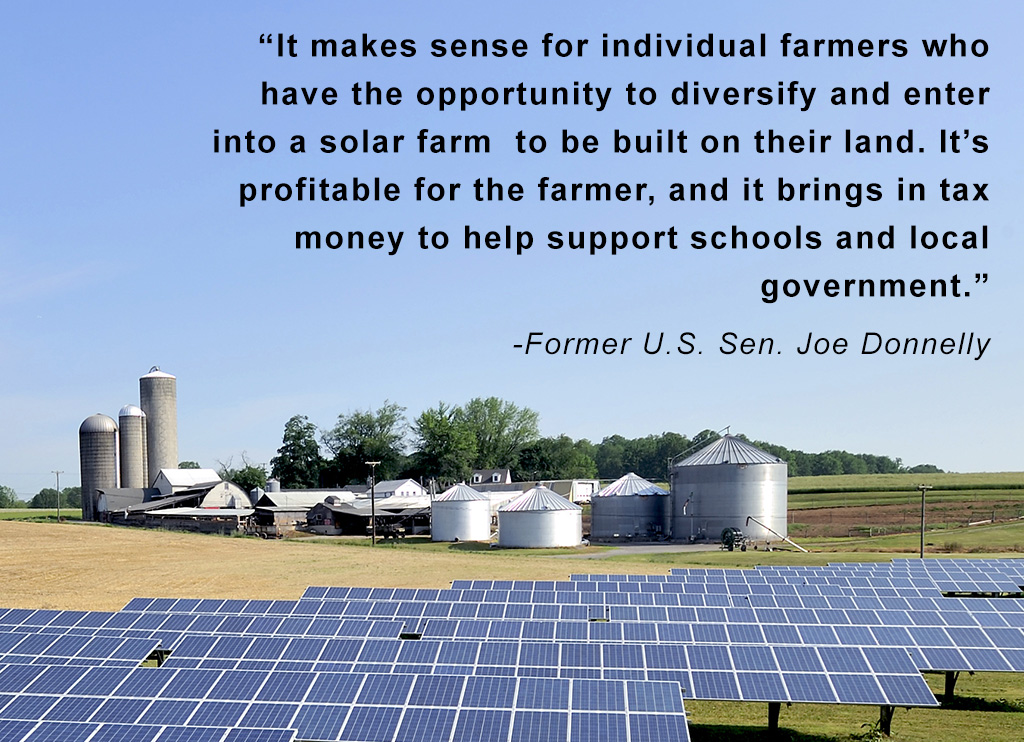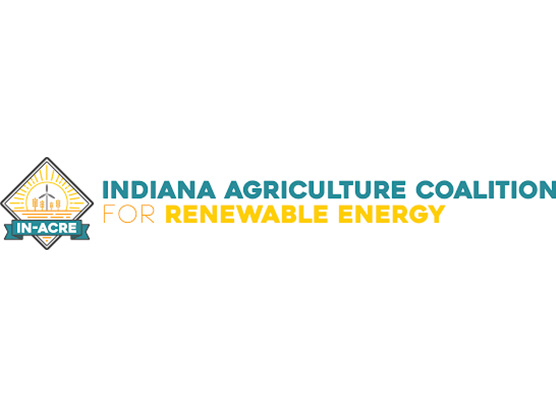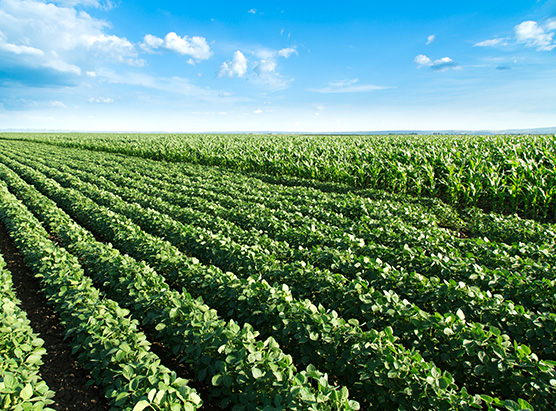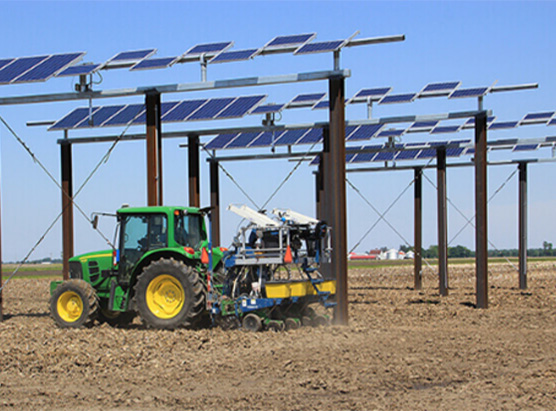Agricultural Benefits
Solar Saves Farms

Not only do both farms and solar panels use sunlight to produce a valuable commodity (agricultural products and electricity, respectively), but they are natural allies. In fact, when the U.S. Department of Agriculture studied solar power on farmland, it noted that farms were among the first to use photovoltaic solar panels when solar power was new technology. The USDA study said, “Farmers have the tradition of being stewards of the land, and their investment in renewable energy supports their role of protecting the land, air, and water".
Air Pollution Leads to Reduced Crop YieldsFarms are among the first to suffer harm from air pollution and climate change. A recent Stanford University-led study found that reducing air pollution can lead to dramatic gains in crop yields. The specific pollutants studied were gasses found in the emissions of coal and gas power plants. Replacing the power from these polluting sources with clean, emissions-free electricity generated through solar power generation can help reduce air pollution, protect the environment, and increase crop productivity.
The power produced by Blue River Solar Farm will reduce reliance on fossil fuels, offsetting 391,193 tons of carbon dioxide emissions – equal to taking 85,077 passenger cars off the road for a year. Supporting solar power supports farmers.
Long-term leases provide farmers with guaranteed lease revenues that allow them to sustain operations and invest in innovation and modernization. By protecting the farmland from residential or commercial development, the site can return to agricultural use when the solar farm ends it useful life.
“Climate change is real, and farmers can be on the leading edge in combating climate change… It makes sense for individual farmers who have the opportunity to diversify and enter into a solar farm to be built on their land,” according to former U.S. Sen. Joe Donnelly. “It’s profitable for the farmer, and it brings in tax money to help support schools and local government.”

-
Indiana Agriculture Coalition for Renewable Energy (IN-ACRE)
Indiana’s agricultural community is looking for ways to help solar saves farms. The Indiana Agriculture Coalition for Renewable Energy (IN-ACRE) is an association of farmers and rural landowners supporting “clean energy approaches and technologies that can open up new income streams, help them save money, improve energy efficiency and implement energy-saving farming practices.”

-
Cleaner air has boosted U.S. corn and soybean yields, Stanford-led research shows
Solar energy is emission-free and replaces electricity from power plants that contribute to air pollution. Dirty air hurts agricultural productivity. Research by Stanford University on the impact of poor air quality on crops found that cleaner air achieved by emission reductions contributed to 20% of U.S. corn and soybean yield increases between 1999 and 2019 – an amount worth about $5 billion per year. (The Stanford study looked at a nine-state region that included Indiana.)

-
Purdue project could lead to farms co-producing crops, clean energy
Indiana university researchers are examining the potential of “Agrivoltaics,” using agricultural land for both solar photovoltaic power generation and farming. Purdue University’s Agronomy Center for Research and Education (ACRE) is studying ways to mix solar and farming by mounting solar panels 15 to 20 feet above the ground at its facility in West Lafayette, Indiana.

Research being conducted by Purdue University shows that solar energy and agriculture can not only live harmoniously, but also work collaboratively. Crops can be safely grown while the same land produces solar energy without conflict.
New research aims to optimize farmland use for crops, solar electricity production 
Former U.S Senator Joe Donnelly shows support for adding solar panels to farms. He expressed that the panels are not only beneficial for providing farmers with economic opportunities, it also takes land that is not always the most productive for farming and gives it new life.
Former Senator Donnelly Touts Benefits of Solar for Your Farm